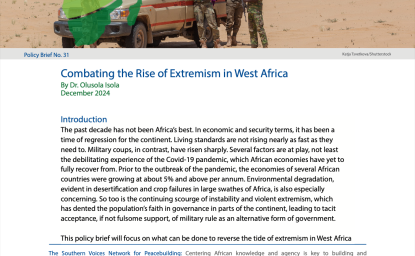What's Heartening About Protests in Afghanistan Over Minority Beheadings
Something extraordinary happened in Afghanistan this week—and, for a change, it was heartening, not horrifying.
Something extraordinary happened in Afghanistan this week—and, for a change, it was heartening, not horrifying.
Crowds of protesters—about 20,000 at their high-water mark, according to credible estimates–took to the streets of Kabul to rail against terrorism and intolerance. Large public gatherings are unusual in Kabul, a dangerous city where civil society tends to advocate in more subtle ways.
The protests were led by Hazaras, a deeply persecuted ethnic and religious minority in Afghanistan. Most Hazaras are Shiite Muslims; ethnic Hazaras and Shiite Muslims each account for about 15% of the Afghan population.
In the months before the U.S.-led intervention in 2001, Hazaras were slaughtered by Taliban forces. But their suffering long predates that massacre: For decades,desperate Hazaras have fled Afghanistan for neighboring Pakistan and Iran. In Pakistan they have come under attack by Sunni Muslim extremists. In Iran, a majority-Shiite state, Hazaras have faced discrimination and other challenges. Some of Afghanistan’s Hazaras have joined the ranks of refugees coursing into Europe.
The immediate trigger for this week's protests was the recent beheading of seven Hazaras in the province of Zabul. The victims, who have been described on social media as the Zabul Seven, included two women, two boys, and a nine-year-old girl. They were executed by militants aligned with Islamic State.
Hazaras have long resented their lack of protection from the state. The particularly brutal nature of the killings in Zabul compelled people to bring their long-festering grievances onto the streets of Kabul.
The protesters, who have included children, were overwhelmingly peaceful–contrary to some media depictions. The largest rally in Kabul became briefly violent when several young people tried to storm the presidential palace. Otherwise, the demonstration was quiet and moving, particularly when several female marchers carried the coffins of some of those who had been beheaded.
In a sign of Afghanistan's maturing democracy, President Ashraf Ghani not only agreed to meet with protest leaders but also permitted Afghan television stations to broadcast the meeting in real time.
President Ghani and Abdullah Abdullah, the CEO of Afghanistan's national unity government, said the right things, insisting that more security forces would be dispatched to Hazara areas and vowing that the killers of the Zabul Seven would be apprehended.
Following up such talk will be difficult. The writ of the Afghan national government barely extends beyond Kabul, and officials often outsource security for far-flung regions–including the northern city of Kunduz, which was briefly seized by the Taliban several weeks ago–to undisciplined and violent militias. The capacity of Afghanistan's army and police is severely constrained, and their ability to protect imperiled communities from militants is by no means assured.
This is likely to mean more difficult times lie ahead for the Hazaras. Already vulnerable to the predations of the Taliban, the Zabul killings underscore the anti-Shiite threat they face from ISIS.
A heartening point about the huge protest in Kabul is that many non-Hazaras—living in Kabul and elsewhere–joined in. In Afghanistan, where sectarian fault lines are less sharp than in Pakistan and Iraq, many have expressed full-throated solidarity with Hazaras.
Still, a resurgent Taliban and an emerging ISIS threat mean that Hazaras’ miseries could worsen rapidly in the absence of a robust government response.
This article originally appeared on The Wall Street Journal.


The Indo-Pacific Program promotes policy debate and intellectual discussions on US interests in the Asia-Pacific as well as political, economic, security, and social issues relating to the world’s most populous and economically dynamic region. Read more


